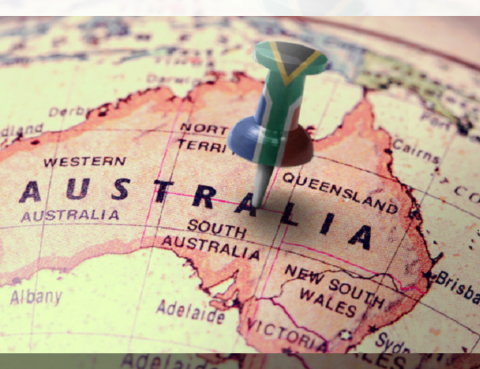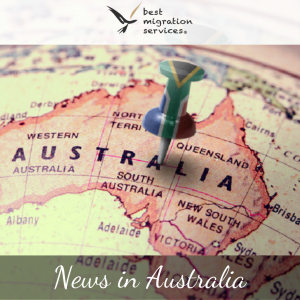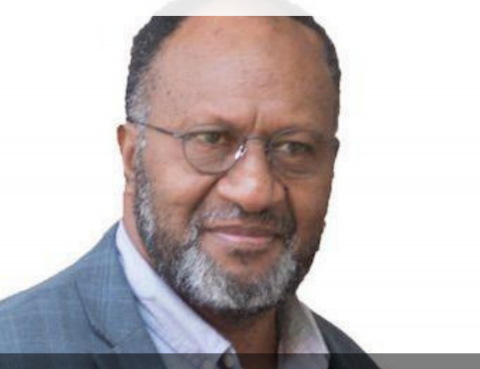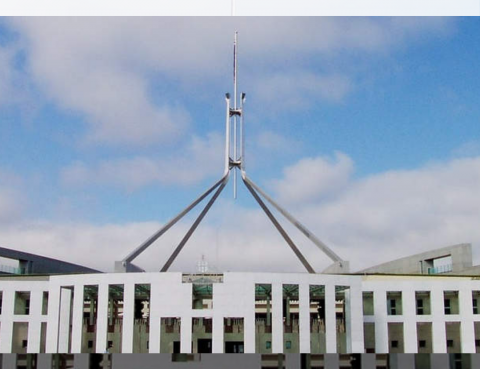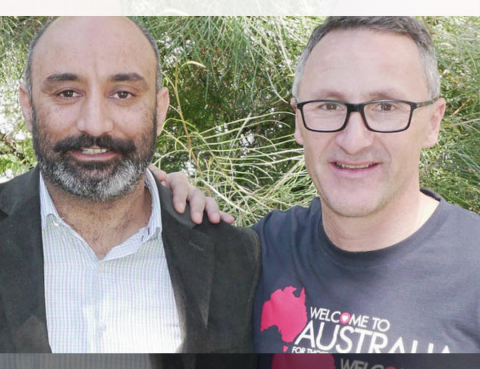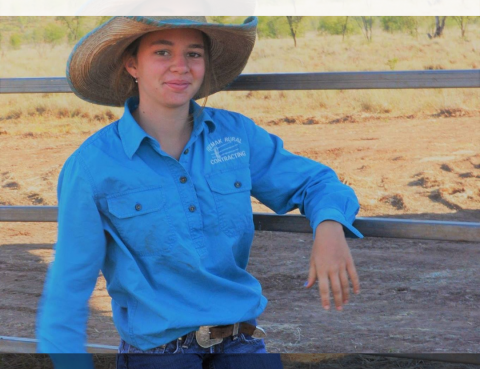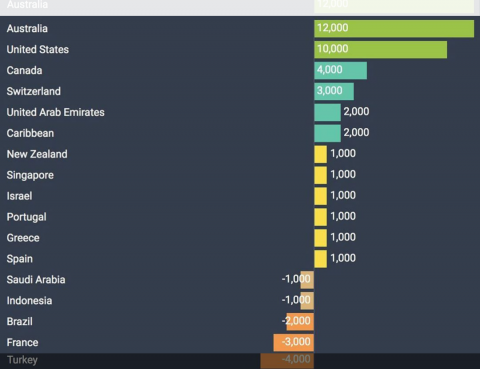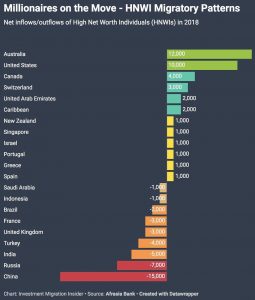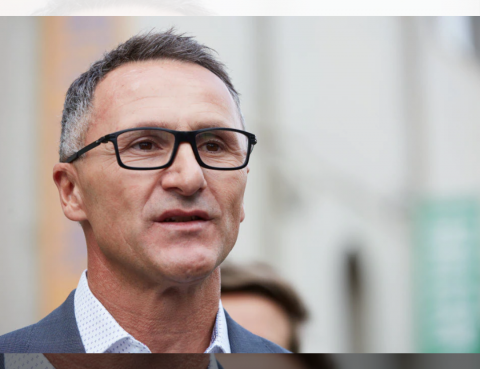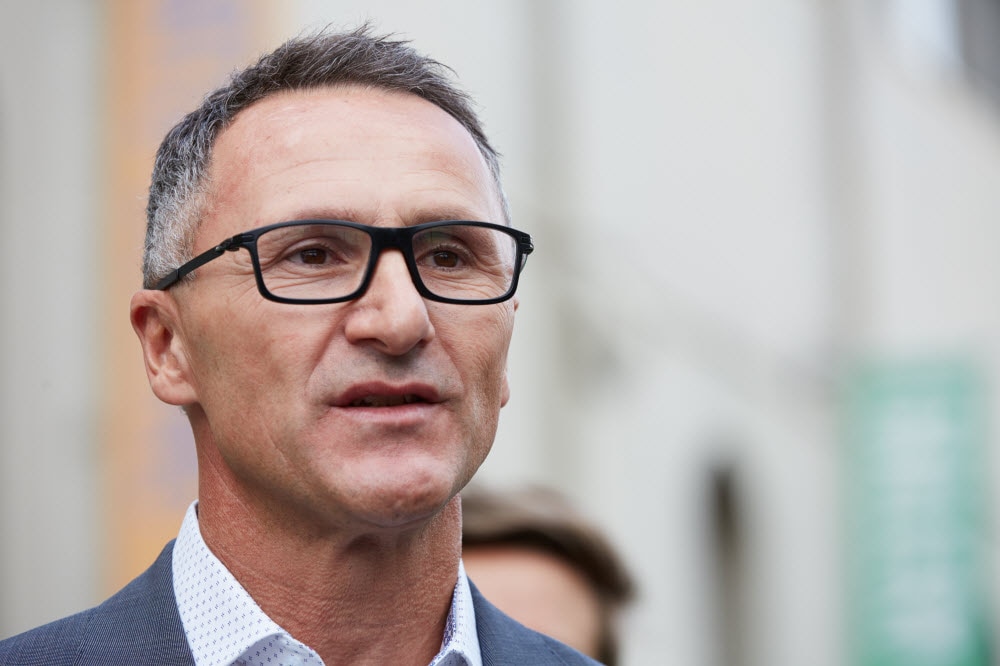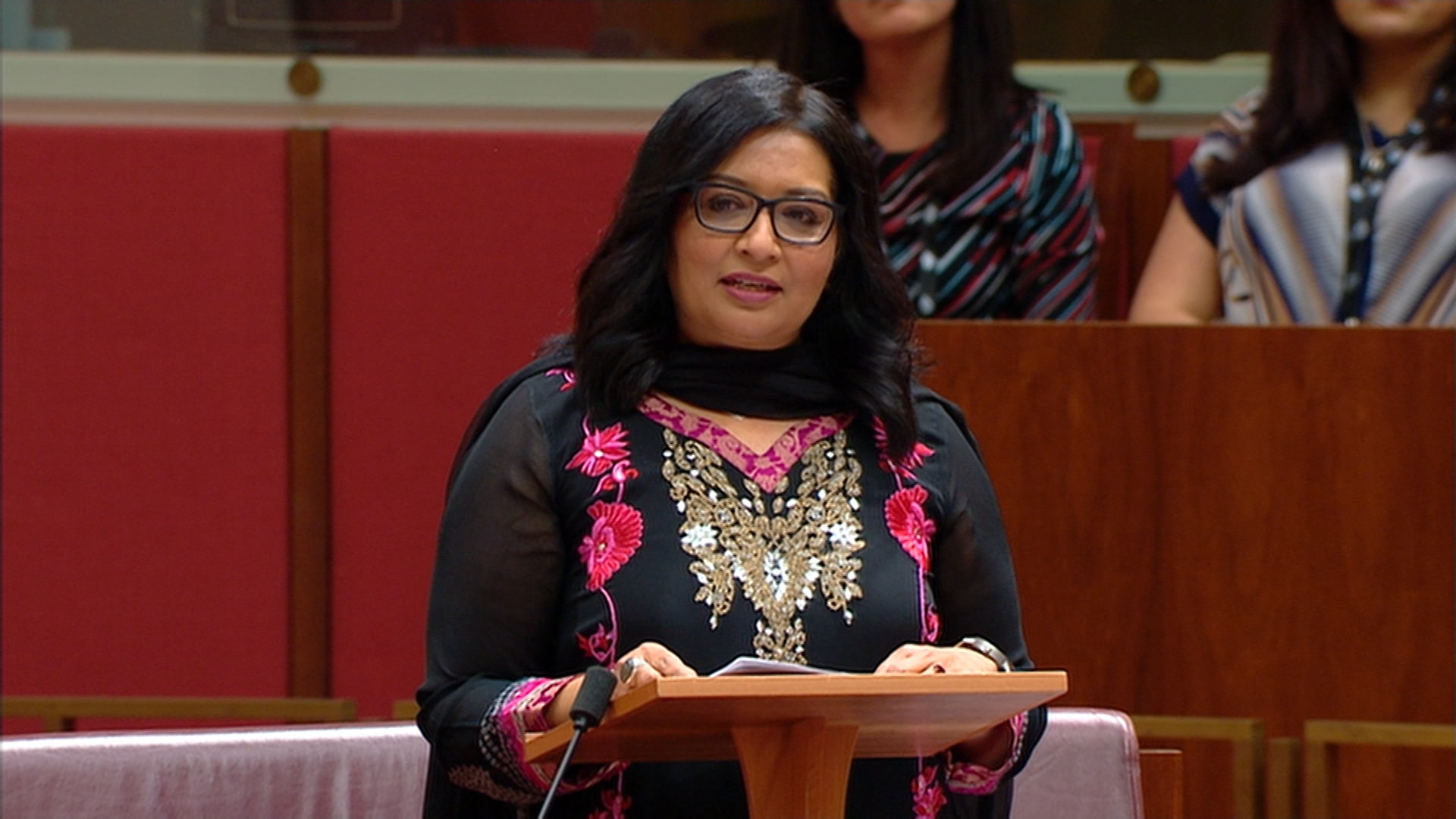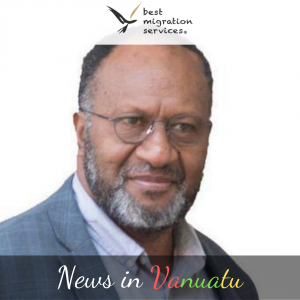
Prime Minister Charlot Salwai will pay an official visit to China from May 26 to 31.
According to China’s Ministry of Foreign Affairs, Prime Minister Salwai was invited by Premier Li Keqiang.
This will be the first official visit to China by Prime Minister Salwai since he took office.
During the visit, President Xi Jinping will meet with him and Premier Li will hold talks with him.
The leaders of the two countries will exchange views on China-Vanuatu relations and important issues of mutual interest. Besides Beijing, Prime Minister Salwai will also visit Hainan and transit in Hong Kong.
Vanuatu is an important country in the Pacific Islands region and a good friend and partner of China’s.
Since the establishment of diplomatic ties 37 years ago, the bilateral relations have made headway with fruitful outcomes in cooperation across the board.
In November last year, President Xi held a successful meeting with Prime Minister Salwai in Papua New Guinea, and they agreed to elevate the bilateral relations to a comprehensive strategic partnership featuring mutual respect and common development, which opened up a new chapter in China-Vanuatu relations.
Taking PM Salwai’s visit as an opportunity, China stands ready to work with Vanuatu to enhance political mutual trust, expand practical cooperation, move forward China-Vanuatu comprehensive strategic partnership and bring more benefits to the two peoples.
SOURCE
[insert page=’footer’ display=’content’]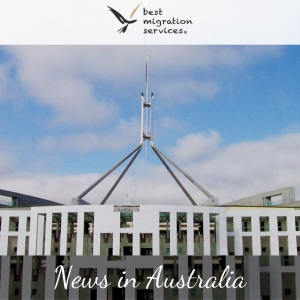
Australia Prime Minister Scott Morrison has claimed victory in the 2019 election, with results showing the Liberal National coalition is on track to be returned to government. So what does this mean for Australian immigration in the next 3 years? What is planned and what should you expect in the coming years for immigration Australia?
Migration Intake numbers
The government will cap permanent migration intake at 160,000 per year over the next 3 years, including refugee cap of 18,750 new migrants. 70 per cent will be in the Skill stream and 30 per cent in the Family stream. Number of Employer Sponsored skilled visas increasing from 35,528 grants in 2017-18 to 39,000 places in 2019-20. State/Territory Nominated category, increasing from 28,974 grants in 2017-18 to 38,968 places in 2019-20, providing states and territories a greater say in migration. Global Talent – Independent program on 1 July 2019 aimed at attracting the very best talent from around the world, with 5,000 places allocated in the 2019-20 Migration Program. No change to the Family stream of the program, with 47,732 places available in 2019-20
DAMA
The government will roll out more DAMA across Australia- stronger incentives for new people to Australia to settle outside the big capitals in areas that will welcome their skills and expertise. 23,000 places each year for regional visas to encourage a greater number of migrants to settle outside Sydney, Melbourne, Perth and south-east Queensland.
Designated Area Migration Agreements (DAMA) for the Northern Territory, the Great South Coast Region of Victoria, the Orana region of Western New South Wales, South Australia (1x regional and 1x Adelaide) and Kalgoorlie-Boulder in the Western Australian Goldfields.
These five-year arrangements allow employers in designated regions to sponsor skilled workers (via the Temporary Skill Shortage 482 visa and Employer Nomination Scheme visa programs) for occupations not available under the standard visas.
Occupation lists that reflect both short and medium to long term skills gaps, as well as acute shortages in regional Australia.
Employer Sponsored visas
Stricter labour market testing – so that skilled migration is only used where an Australian worker is not available and stronger English language, age and work experience requirements.
Regional Provisional and Permanent visas
Under two new regional visa categories (Subclass 491 Skilled Work Regional (Provisional) visa and Subclass 494 Skilled Employer Sponsored), skilled migrants will be priority processed and afforded access to a larger pool of jobs on the eligible occupation lists compared to those who live in our major cities. Skilled migrants will have a pathway to permanent residence under the Subclass 191 Permanent Residence (Skilled Regional).
Extra points will be awarded for migrants living and working in regional Australia, and states and territories can request access to an increased allocation of dedicated regional migration places.
Regional Australia will encompass all of Australia outside of Sydney, Melbourne, Brisbane/Gold Coast and Perth. Visa recipients will need to live and work in regional Australia for three years before becoming eligible to apply for permanent residence.
Changes to working holiday maker program
A third year visa option for all Working Holiday Makers who from July 2019 carry out six months of specified work in regional areas.
Increased the period in which all Working Holiday Makers can stay with the same agricultural (plant and animal cultivation) employer, from six to 12 months.
Expanded the regional areas where subclass 462 visa holders can work in agriculture (plant and animal cultivation) to qualify for a second year of stay. Previously only those 462 visa holders who worked in Northern Australia were eligible.
Lifted the caps in 2018-19 on Work and Holiday visas from Chile, Israel, Peru and Spain with further negotiations underway.
Increased the eligible age from 30 to 35 years for Working Holiday visa applicants, starting with Canada and Ireland from November 2018.
Began a new Work and Holiday arrangement with Greece in March 2019.
What will likely NOT happen now that Labor has lost the 2019 election
Labor made a number of promises for various visas, including putting an end to the 15,000 place cap on parent visas where Australian families have to choose which set of parents can visit.
Labor intended introduce a ‘Long Stay Parent’ visa that allows families to bring both sets of parents out and proposed to drop the cost of these visas: three-year visas that currently set you back $5,000 to cost $1,250, while the $10,000 price tag for a five-year visa to come down to $2,500.
Labor also intended to increase the Temporary Skilled Migration Income Threshold from $53,900 to $65,000 per year.
SOURCE
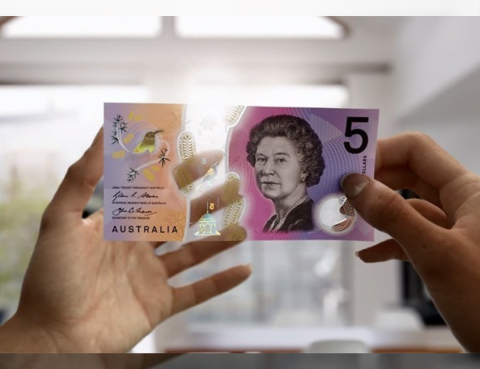
In 1966, Australia switched from pounds to decimal currency. The country’s central bank issued a new range of banknotes with modern safety features – including watermarks, woven metal thread and raised print. But these technologies couldn’t prevent a $900,000 swindle.

Polymer banknotes are banknotes made from a polymer such as biaxially oriented polypropylene (BOPP). Such notes incorporate many security features not available in paper banknotes, including the use of metameric inks. Polymer banknotes last significantly longer than paper notes, causing a decrease in environmental impact and a reduced cost of production and replacement.
Modern polymer banknotes were first developed by the Reserve Bank of Australia (RBA), Commonwealth Scientific and Industrial Research Organisation (CSIRO) and The University of Melbourne. They were first issued as currency in Australia during 1988 (coinciding with Australia’s bicentennial year). In 1996 Australia switched completely to polymer banknotes. Other countries that have switched completely to polymer banknotes include: Brunei, Canada, New Zealand, Papua New Guinea, Romania and Vietnam. The latest countries to introduce polymer banknotes into general circulation include: the United Kingdom, Nigeria, Cape Verde, Chile, The Gambia, Nicaragua, Trinidad and Tobago, Mexico, Maldives, Mauritania, Botswana, São Tomé and Príncipe, North Macedonia, the Russian Federation, Armenia, Solomon Islands, Egypt, the Organisation of Eastern Caribbean States (OECS).
History
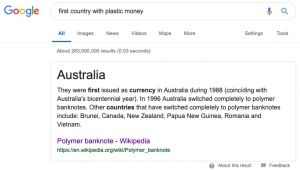
In 1967 forgeries of the Australian $10 note were found in circulation and the Reserve Bank of Australia was concerned about an increase in counterfeiting with the release of colour photocopiers that year. In 1968 the FGH started collaborations with RTASOC, and funds were made available in 1969 for the experimental production of distinctive papers. The insertion into banknotes of an optically variable device (OVD) created from diffraction gratings in plastic as a security device was proposed in 1972. The first patent arising from the development of polymer banknotes was filed in 1973. In 1974 the technique of lamination was used to combine materials; the all-plastic laminate eventually chosen was a clear, BOPP laminate, in which OVDs could be inserted without needing to punch holes.
They were first issued as currency in Australia during 1988 (coinciding with Australia’s bicentennial year). In 1996 Australia switched completely to polymer banknotes. Other countries that have switched completely to polymer banknotes include: Brunei, Canada, New Zealand, Papua New Guinea, Romania and Vietnam.
Security features

Polymer banknotes usually have three levels of security devices. Primary security devices are easily recognisable by consumers and may include intaglio, metal strips, and the clear areas of the banknote. Secondary security devices are detectable by a machine. Tertiary security devices may only be detectable by the issuing authority when a banknote is returned.
The South Australian Regional Workforce Designated Area Migration Agreement (DAMA) has been designed to address skills shortages across the state.
It will assist a range of industries including agriculture, forestry, hospitality, tourism, health and construction to fill
critical employment gaps and drive economic growth.
The tables below show occupations that are eligible for sponsorship under the DAMA for South Australia’s
regional workforce.
The age concessions in this DAMA require candidates to be under 50.
Employers may consider applying under the standard Temporary Skill Shortage visa (subclass 482) outside of the
DAMA for occupations with no concessions.
| Occupation | ANZSCO code |
ANZSCO skill level |
Skills and experience concession |
TSMIT concession |
English concession |
Age concession |
Permanent pathway |
| Accommodation and Hospitality Managers (nec) |
141999 | 2 | ✓ | ✓ | ✓ | ✓ | |
| Aged or disabled carer | 423111 | 4 | ✓ | ✓ | ✓ | ||
| Audiologist | 252711 | 1 | |||||
| Automotive Electrician | 321111 | 3 | ✓ | ||||
| Backhoe Operator | 721212 | 4 | ✓ | ✓ | |||
| Baker | 351111 | 3 | ✓ | ✓ | ✓ | ✓ | |
| Bar Attendant | 431111 | 4 | ✓ | ✓ | ✓ | ||
| Bulldozer Operator | 721213 | 4 | ✓ | ✓ | |||
| Cafe or Restaurant Manager | 141111 | 2 | ✓ | ✓ | ✓ | ✓ | |
| Chef | 351311 | 2 | ✓ | ✓ | |||
| Chiropractor | 252111 | 1 | |||||
| Clinical Psychologist | 272311 | 1 | |||||
| Community Arts Worker | 272611 | 1 | |||||
| Community Worker | 411711 | 2 | ✓ | ||||
| Construction Rigger | 821711 | 4 | ✓ | ✓ | |||
| Cook | 351411 | 3 | ✓ | ✓ | ✓ | ✓ | |
| Counsellors (nec) | 272199 | 1 | ✓ | ✓ | |||
| Crane, Hoist or Lift Operator | 712111 | 4 | ✓ | ✓ | |||
| Dental assistant | 423211 | 4 | ✓ | ✓ | ✓ | ||
| Dental Specialist | 252311 | 1 | ✓ | ✓ | |||
| Dentist | 252312 | 1 | ✓ | ✓ | |||
| Diesel Motor Mechanic | 321212 | 3 | ✓ | ||||
| Dietitian | 251111 | 1 | ✓ | ✓ | |||
| Disabilities Services Officer | 411712 | 2 | ✓ | ✓ | ✓ | ||
| Diversional Therapist | 411311 | 3 | ✓ | ✓ | |||
| Driller | 712211 | 4 | ✓ | ✓ | |||
| Earthmoving Plant Operator (General) |
721211 | 4 | ✓ | ✓ | |||
| Educational Psychologist | 272312 | 1 | |||||
| Enrolled Nurse | 411411 | 2 | ✓ | ✓ | ✓ | ||
| Excavator Operator | 721214 | 4 | ✓ | ✓ | |||
| Exercise Physiologist | 234915 | 1 | ✓ | ✓ | |||
| Family Support Worker | 411713 | 2 | ✓ | ✓ | ✓ | ||
| Gaming Worker | 431311 | 4 | ✓ | ✓ | ✓ | ||
| Grader Operator | 721215 | 4 | ✓ | ✓ | |||
| Health Diagnostic and Promotion Professionals (nec) |
251999 | 1 | ✓ | ✓ | |||
| Hotel or Motel Manager | 141311 | 2 | ✓ | ✓ | ✓ | ✓ | |
| Hotel or Motel Receptionist | 542113 | 4 | ✓ | ✓ | ✓ | ||
| Hotel Service Manager | 431411 | 3 | ✓ | ✓ | |||
| Interpreter | 272412 | 1 | ✓ | ✓ | |||
| Loader Operator | 721216 | 4 | ✓ | ✓ | |||
| Miner | 712212 | 4 | ✓ | ✓ | |||
| Motor Mechanic (General) | 321211 | 3 | ✓ | ||||
| Motor Vehicle Parts and Accessories Fitter (General) |
899411 | 4 | ✓ | ✓ | ✓ | ✓ | ✓ |
| Motorcycle Mechanic | 321213 | 3 | ✓ | ||||
| Nursing support worker | 423312 | 4 | ✓ | ✓ | ✓ | ||
| Occupational Therapist | 252411 | 1 | |||||
| Optometrist | 251411 | 1 | |||||
| Organisational Psychologist | 272313 | 1 | |||||
| Orthoptist | 251412 | 1 | ✓ | ✓ | |||
| Orthotist or Prosthetist | 251912 | 1 | |||||
| Osteopath | 252112 | 1 | |||||
| Panelbeater | 324111 | 3 | ✓ | ✓ | |||
| Passenger Coach Driver | 731213 | 4 | ✓ | ✓ | ✓ | ||
| Pastrycook | 351112 | 3 | ✓ | ✓ | ✓ | ✓ | |
| Personal care assistant | 423313 | 4 | ✓ | ✓ | ✓ | ||
| Physiotherapist | 252511 | 1 | |||||
| Podiatrist | 252611 | 1 | |||||
| Psychologists (nec) | 272399 | 1 | |||||
| Psychotherapist | 272314 | 1 | ✓ | ✓ | |||
| Rehabilitation Counsellor | 272114 | 1 | ✓ | ✓ | |||
| Residential Care Officer | 411715 | 2 | ✓ | ✓ | ✓ | ||
| Sand Blaster | 711913 | 4 | ✓ | ✓ | |||
| Scaffolder | 821712 | 4 | ✓ | ✓ | |||
| Shot Firer | 712213 | 4 | ✓ | ✓ | |||
| Social Worker | 272511 | 1 | |||||
| Sonographer | 251214 | 1 | |||||
| Special Education Teachers (nec) |
241599 | 1 | |||||
| Special Needs Teacher | 241511 | 1 | |||||
| Speech Pathologist | 252712 | 1 | |||||
| Steel Fixer | 821713 | 4 | ✓ | ✓ | |||
| Structural Steel Erector | 821714 | 4 | ✓ | ✓ | |||
| Teacher of the Hearing Impaired |
241512 | 1 | |||||
| Teacher of the Sight Impaired | 241513 | 1 | |||||
| Therapy aide | 423314 | 4 | ✓ | ✓ | ✓ | ||
| Vehicle Painter | 324311 | 3 | ✓ | ✓ | |||
| Vehicle Trimmer | 324212 | 3 | ✓ | ✓ | |||
| Waiter | 431511 | 4 | ✓ | ✓ | ✓ | ||
| Youth Worker | 411716 | 2 | ✓ | ✓ | ✓ |
Area: Postcode range 5110 – 5734
| Occupation | ANZSCO code |
ANZSCO skill level |
Skills and experience concession |
TSMIT concession |
English concession |
Age concession |
Permanent pathway |
| Agricultural and Horticultural | 721111 | 4 | ✓ | ✓ | ✓ | ✓ | |
| Mobile Plant Operator | |||||||
| Agricultural Consultant | 234111 | 1 | |||||
| Agricultural Scientist | 234112 | 1 | |||||
| Agricultural Technician | 311111 | 2 | ✓ | ✓ | |||
| Aquaculture Farmer | 121111 | 1 | ✓ | ✓ | ✓ | ||
| Beef Cattle Farmer | 121312 | 1 | ✓ | ✓ | ✓ | ✓ | |
| Dairy Cattle Farmer | 121313 | 1 | ✓ | ✓ | ✓ | ✓ | |
| Facilities Manager | 149913 | 1 | ✓ | ✓ | |||
| Farm, Forestry and Garden Workers (nec) (Irrigationist) |
841999 | 5 | ✓ | ||||
| Fishing Hand | 899212 | 4 | ✓ | ✓ | ✓ | ✓ | |
| Food Technologist | 234212 | 1 | |||||
| Forester | 234113 | 1 | |||||
| Forestry Worker | 841311 | 4 | ✓ | ✓ | ✓ | ✓ | |
| Fruit or Nut Grower | 121213 | 1 | ✓ | ✓ | ✓ | ✓ | |
| Grape Grower | 121215 | 1 | ✓ | ✓ | ✓ | ✓ | |
| Logging Assistant | 841312 | 4 | ✓ | ✓ | ✓ | ✓ | |
| Logging Plant Operator | 721112 | 4 | ✓ | ✓ | ✓ | ✓ | |
| Meat Boner and Slicer | 831211 | 4 | ✓ | ✓ | ✓ | ✓ | |
| Meat Inspector | 311312 | 2 | ✓ | ✓ | |||
| Meat Process Worker | 831311 | 5 | ✓ | ✓ | |||
| Mixed Crop and Livestock Farmer |
121411 | 1 | ✓ | ✓ | ✓ | ✓ | |
| Mixed Crop Farmer | 121216 | 1 | ✓ | ✓ | ✓ | ✓ | |
| Mixed Livestock Farmer | 121317 | 1 | ✓ | ✓ | ✓ | ✓ | |
| Nurseryperson | 362411 | 3 | ✓ | ✓ | ✓ | ✓ | |
| Pig Farmer | 121318 | 1 | ✓ | ✓ | ✓ | ✓ | |
| Poultry Farmer | 121321 | 1 | ✓ | ✓ | ✓ | ✓ | |
| Primary Products Inspectors (nec) |
311399 | 2 | ✓ | ✓ | |||
| Production Horticulturalist | 070499 (Occupation not listed in ANZSCO) |
3 | ✓ | ✓ | ✓ | ✓ | |
| Production Manager (Forestry) | 133511 | 1 | ✓ | ✓ | |||
| Saw Doctor | 323315 | 3 | ✓ | ✓ | ✓ | ||
| Sawmilling Operator | 711313 | 4 | ✓ | ✓ | ✓ | ✓ | |
| Senior Production Horticulturalist |
070499 (Occupationnot listed in ANZSCO) |
2 | ✓ | ✓ | ✓ | ||
| Slaughterer | 831212 | 4 | ✓ | ✓ | ✓ | ✓ | |
| Tree Faller | 841313 | 4 | ✓ | ✓ | ✓ | ✓ | |
| Truck Driver (General) | 733111 | 4 | ✓ | ✓ | ✓ | ✓ | ✓ |
| Vegetable Grower | 121221 | 1 | ✓ | ✓ | ✓ | ✓ |
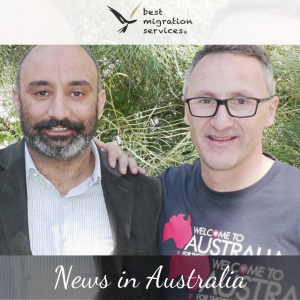
Greens Senate candidate for Queensland Navdeep Singh has demanded an urgent review of the current testing system in place to measure the English language standards for migrants.
The International English Language Testing System (IELTS) is a widely-accepted test to measure visa applicants’ English language ability.
A good English score in IELTS is often a pre-requisite for international study, migration and work.
The IELTS score is often valid for two years but in some cases the validity has now been extended to three years.
“So if IELTS expires, does that mean your English has expired”, asks Navdeep Singh, a Greens Senate candidate for Queensland.
Mr Singh said the English language requirements set for international studies and for the migration purpose are making peoples’ lives difficult.
“This is one of the most important issues for migrant communities which we need to address on an urgent basis,” he said.
“It is important to have reasonable English language standards, not only for social cohesion but also as an important skill to succeed in Australia. But regretfully, this whole system especially the English Language test IELTS has turned into a money-making business.”
Mr Singh has demanded a review in the current English language testing system, the IELTS.
“It should be urgently reviewed as there are flaws in this system. Why are we forcing migrants to sit in this test again and again? I wonder how your English can expire,” he asks.
“I know people who are under severe depression. They’re frustrated with their repeated failure to get through the English requirement. Some of them had to sit in this exam over ten times.”
IELTS doesn’t have a provision to take up the test in different modules on an individual basis.
Mr Singh alleged that the system is designed in a way that if an applicant fails in one module but clears the other three, he’ll need to book the whole test again.
“So basically, it’s all about making money without putting people first,” he says.

Mr Singh also demanded more transparency in corporate donations to the political parties.
“I joined The Greens because they represent all of us, whereas the major parties are under the influence of their big corporate donors,” he said.
“For the financial year 2015-16, IELTS’ co-owner IDP has donated over 180,000 dollars to the Australian Labor Party. They’d explain what their expectations are when they make political donations.”
“People have a right to know the nature of interactions that IDP has with ALP or any other political parties.”
A spokesperson from IDP has denied allegations of giving any political donations to ALP.
The statement reads – “The figure Mr Singh quoted as a “donation” was, in fact, rental payment to the Community and Public Sector Union for office space we rented at commercial rates in Thomas Street, Haymarket for our Sydney premises in 2015 and 2016. We have since moved from this location. This was not a political donation.”
Greens activist Navdeep Singh has called for an open and respectful conversation regarding the change in the date for Australia day. But things haven’t gone that smooth on social media. Preetinder Singh Grewal reports….
IELTS is a multi-million dollar industry with nearly 3 million candidates taking this test worldwide each year.
IELTS’ co-owner IDP generated revenue of nearly $487 million in 2018, its third consecutive growth year since listing on the Australian Stock Exchange in 2015.
Mr Singh said that Greens have pledged to make English requirements within the reach of migrant communities.
“We’ve got a $50 million plan to increase the ability of migrants and new arrivals to Australia to access English language support.”
[insert page=’footer’ display=’content’]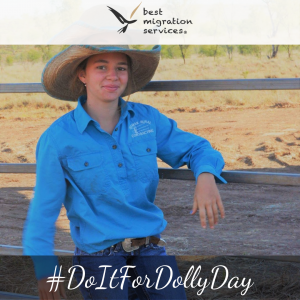 Today is the inaugural Do it for Dolly Day 💙 – a day for us to remember a young life lost and take a stand together against all forms of bullying.
Today is the inaugural Do it for Dolly Day 💙 – a day for us to remember a young life lost and take a stand together against all forms of bullying.
As proud sponsors of the 2019 Local Hero Award, a category of the Australian of the Year Awards, we as a Department are proud to join with Kate and Tick Everett and encourage everyone to make a positive difference at school, work and at home. #BeKind and #DoItForDollyDay
Amy “Dolly” Everett was the victim of bullying and ended her young life at just 14 years of age. Dolly’s Dream has been established by her family and friends in her memory.
Dolly’s Dream will work to create positive change and help prevent the lives of other children being lost, and act as a voice for those who cannot speak for themselves.
Dolly’s Dream will:
• Raise awareness in communities, children, and parents about the serious issue of bullying and its devastating effects
• Work to prevent and address Bullying issues in the community
• Deliver information on ways to mitigate bullying, including cyberbullying, within school communities and to those in need
• Change cultures in the community to prevent bullying, and
• Support victims of bullying
Since the launch of this page, the Everett family has been overwhelmed by the support and kindness shown by friends and strangers, and by early fundraising efforts to establish Dolly’s Dream.
It has become evident that Dolly’s death has had a huge impact on Australians everywhere.
To safeguard the future of Dolly’s Dream and to maximize its impact, Tick and Kate have partnered with the Alannah & Madeline Foundation (ABN 96 514 115 810). The assistance of this partnership will allow Tick and Kate to progress their mission of honoring their daughter’s memory through Dolly’s Dream.
Money raised for Dolly’s Dream will go to programs and services to achieve Dolly’s Dream’s purpose.
To do this, funding expenditure will be governed by an Advisory Board which will include Kate and Tick Everett. This Advisory Board will make recommendations on how to best spend funds and ensure Dolly’s Dream’s programs and services have the greatest impact.
To support Dolly’s Dream, please make your donations to:
BSB 083-004
Account 98-827-4318 or via the link on dollysdream.org.au
You can contact Dolly’s Dream
[email protected]
[email protected]
[insert page=’footer’ display=’content’]
Australia was the top country worldwide for HNWI inflows in 2018, beating out its main rival the US for the 4′-11
year running. Popular places for them to move to in Australia included: Sydney, Melbourne, Gold Coast,
Sunshine Coast, Perth and Brisbane.
Possible reasons for Australia ‘s popularity among migrating HNWls:
- The safety of the country – low crime rate.
- The appeal of bringing up children and going to school/university in the country.
- English speaking country. Almost all HNWls globally know English as their first or second language.
- First world economy.
- First class healthcare system.
- Growing economy. One of the few high income economies that has grown strongly over the past decade.
- Space – Australia has only 25 million people and is a large country.
- Climate, nature and scenery.
- Tax rates – although company tax and income tax rates in Australia are quite high it should be noted
that unlike most other developed countries, Australia has no inheritance taxes – this encourages
wealthy people to stay in the country and build their businesses for future generations.
Reasons why migrating HNWls may be preferring Australia to the US:
- Safety. Australia was recently rated as the safest country worldwide in our annual woman safety
ratings. Australia is also a particularly safe country to raise children. The US has some safety problems
especially in the big cities like Chicago and Los Angeles. - Australia has no inheritance taxes. In the US, individuals with wealth of over US$5.5 million (or US$11
million per married couple) pay inheritance taxes (top rate of 40%). - Problems in the US healthcare industry. In the US, getting healthcare insurance can be difficult for
incoming HNWls. Notably, several international medical aids cover patients in all developed countries
with the exception of the US (which is a big warning sign). In particular, the Affordable Care Act
enacted in 2010 has not turned out well for wealthy and middle class patients in the US, with average
premiums rising by over 120% since the act was passed in 2010.
For further analysis and rankings, please find the full report here.
Also please find summary presentation here.
[insert page=’footer’ display=’content’]If you are a skilled worker in Saudi Arabia, immigration to Australia can open the doors of liberal society, democratic values, vibrant lifestyle, and high-income jobs in top organizations for you. Australia as it is a magnet for skilled workers and professionals all across the world.
However, to immigrate to Australia from Saudi Arabia as a skilled worker, you need to have skills and experience to work in the high demand occupations in Australia. Apart from this, you also require following the points-based immigration system to apply and obtain a Skilled Visa in Australia.
Let’s take a look at both these key aspects of Australia immigration from Saudi Arabia.
How to Apply for High Demand Occupations in Australia?
Australia releases Skilled Occupation List (SOL) every year to invite applications from the skilled migrants across the globe. You must select an occupation from the relevant Skilled Occupation list or Consolidated Sponsored Occupation List (CSOL) to apply for a skilled visa in Australia. However, you must have the skills and experience matching the occupation you have chosen.
Once, you have a chosen occupation, you need to apply for the right Australian skilled, visa, i.e. Subclass 189 Visa, Subclass 190 visa, Subclass 457 visa or Subclass 489 Visa. The Department of Immigration and Border Protection (DIBP) has designed the entire above mentioned visa categories based on the state nomination, employer sponsorship, and independent skilled visa application, etc. If you are looking for Australia immigration from Saudi Arabia, you must choose the most appropriate visa category among the above.
How to follow the Point-based Immigration System of Australia
Australia has got a point based system in place for immigration procedure. As per this system interested in skilled migration to Australia (through subclass 189, 190 and 489 visas), need to submit EOI in the SkillSelect System of Australia. Once an applicant submits Expression of Interest (EOI) in SkillSelect system it allocates the points to a candidate, based his/her age, education, work experience, language skills, etc. factors. The applicants selected for Australia immigration receive the Invitation to Apply (ITA) to apply for a visa in Australia through the SkillSelect system. An applicant needs to apply for the visa within 60 days of the receipt of ITA.
Key documents required to apply in the SkillSelect system are as follows:
- Skill Assessment Report from a relevant assessing authority to confirm that you have the skills to get employed in high demand occupations in Australia
- IELTS English Test Result to get your proficiency level confirmed in the English Language.
Visas Avenue- Making Immigration to Australia from Saudi Arabia hassle-free for applicants
If you have plans to get permanent residency in Australia from Saudi Arabia, you may coordinate with reliable and most experienced visa and immigration experts at Visas Avenue Immigration.
Best Migration Services are the leading Australian immigration services law firm for Australian Immigration and visa process. If you wish to discuss your eligibility or immigration process for Australia immigration with the certified migration expert, you may contact Best Migration Services by phone.
[insert page=’footer’ display=’content’]


